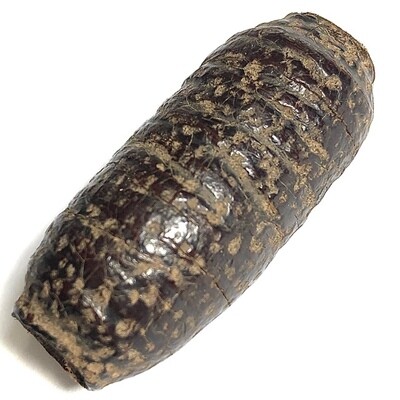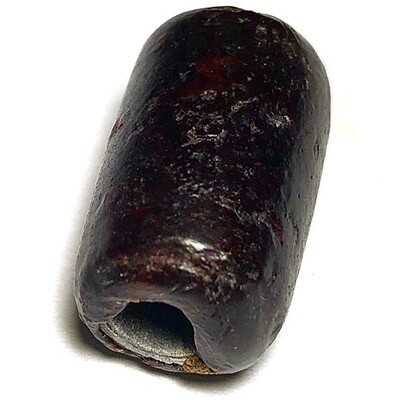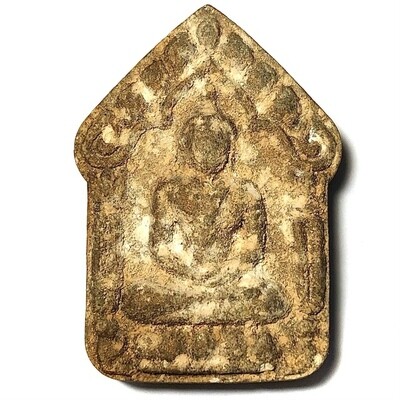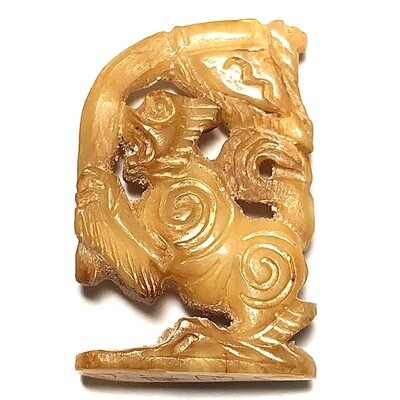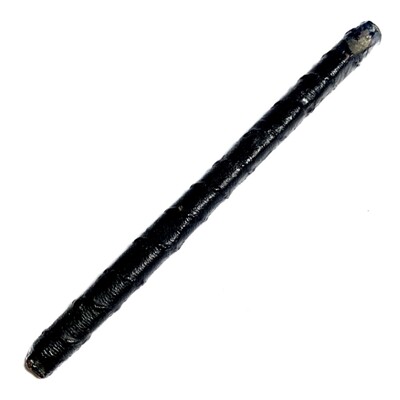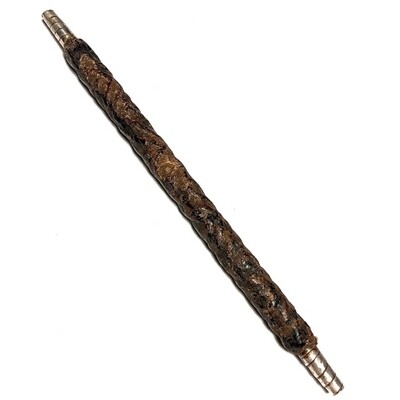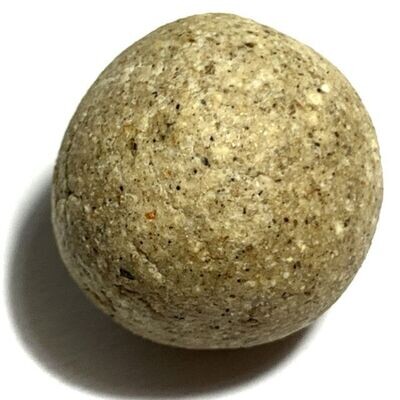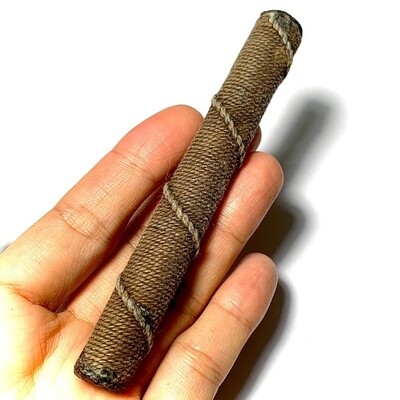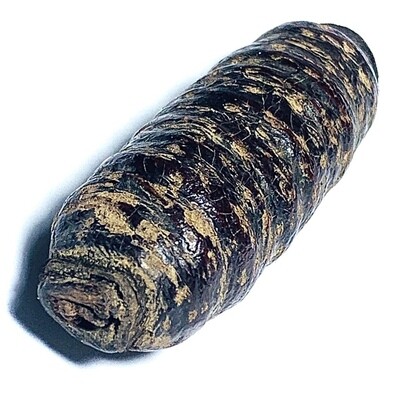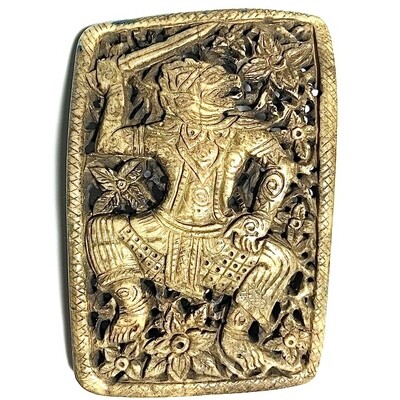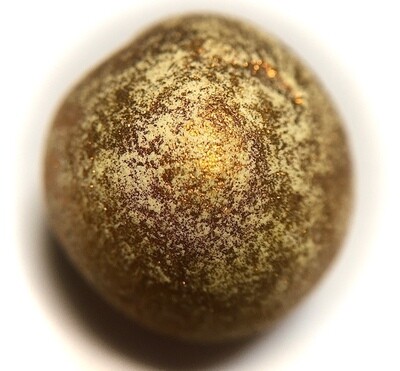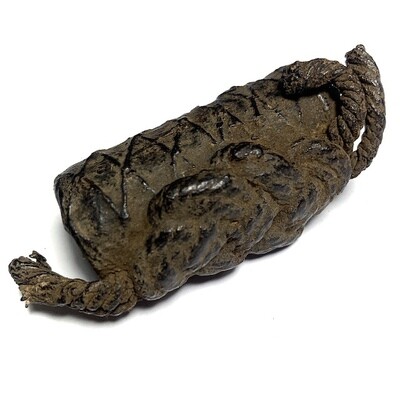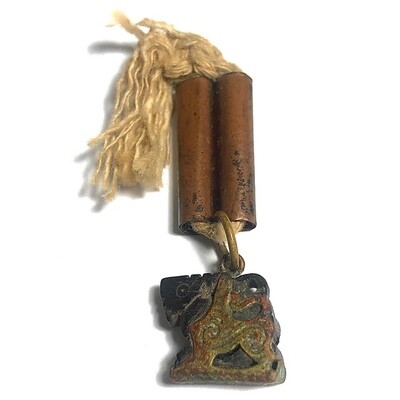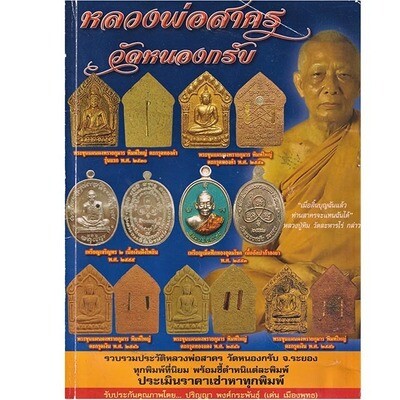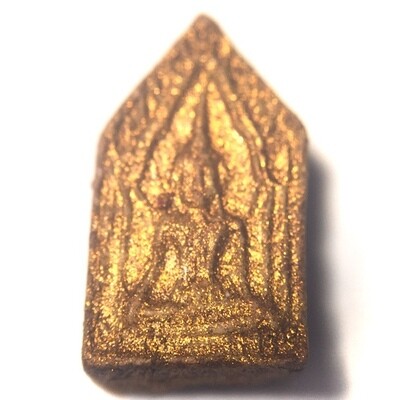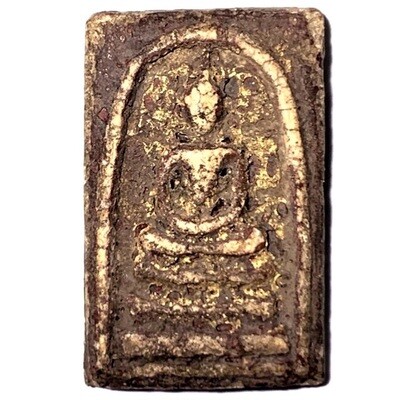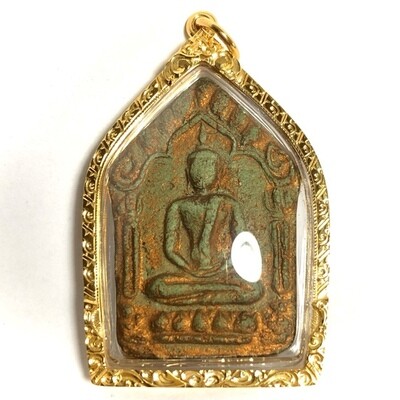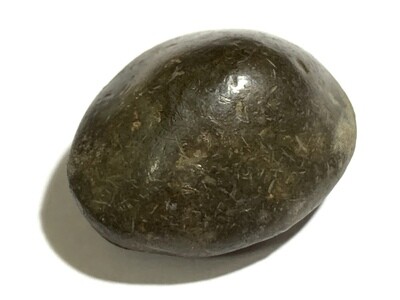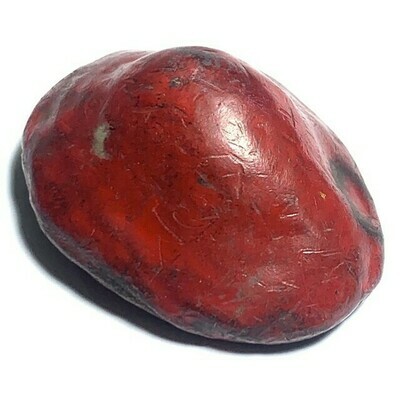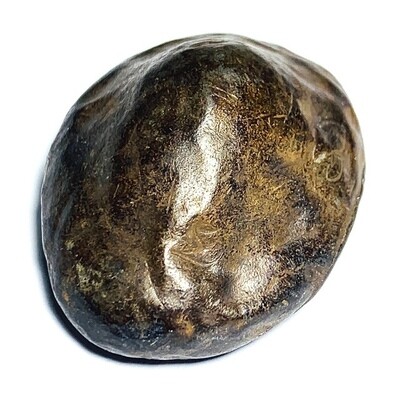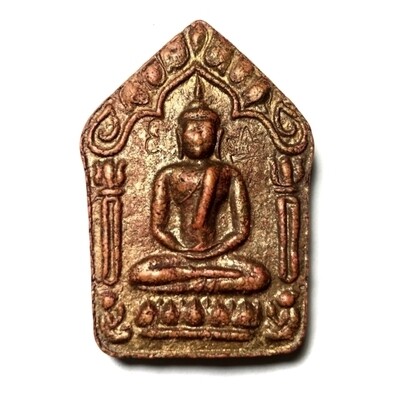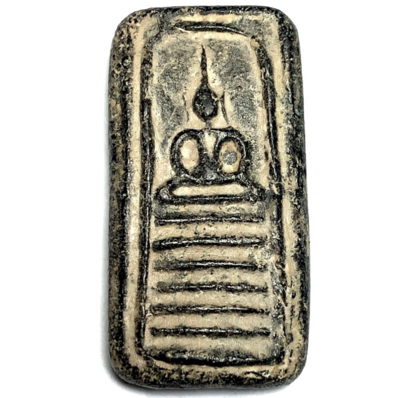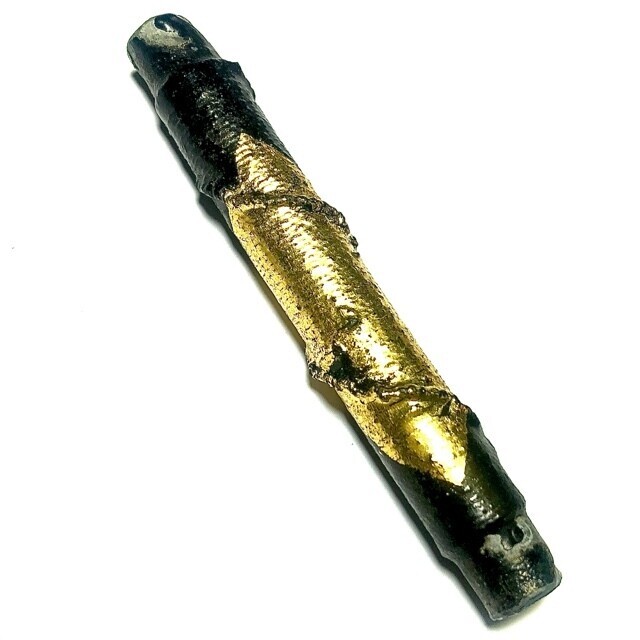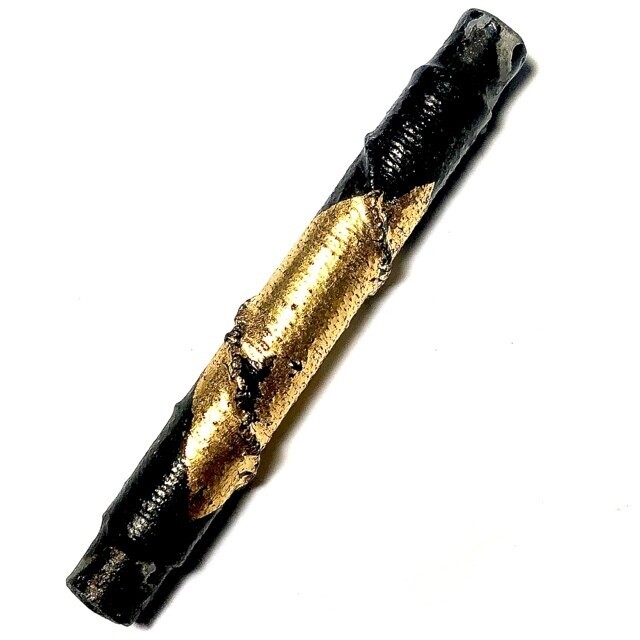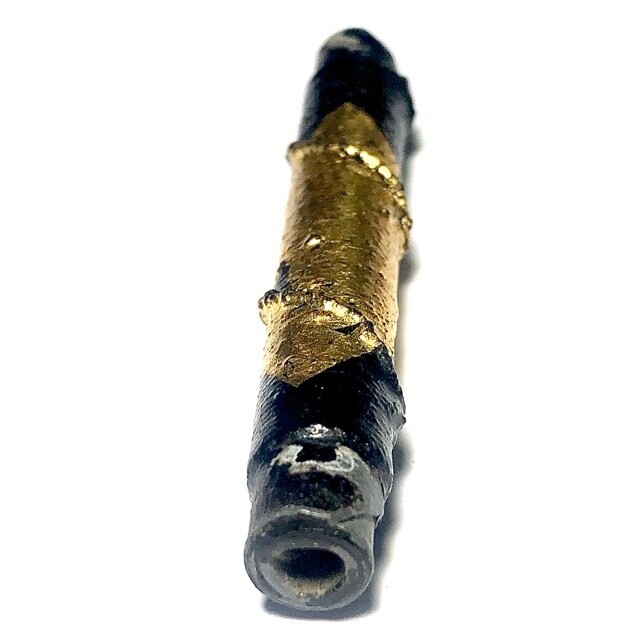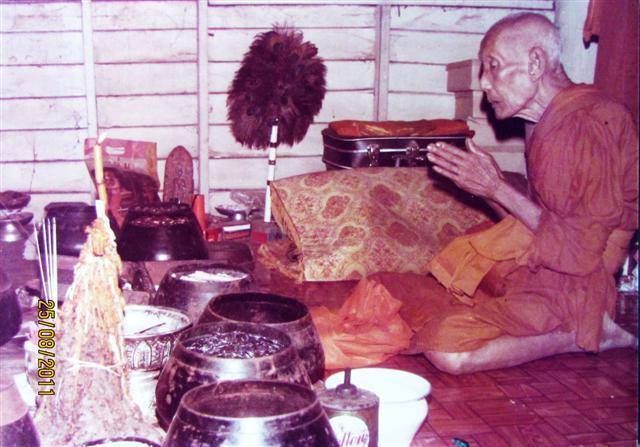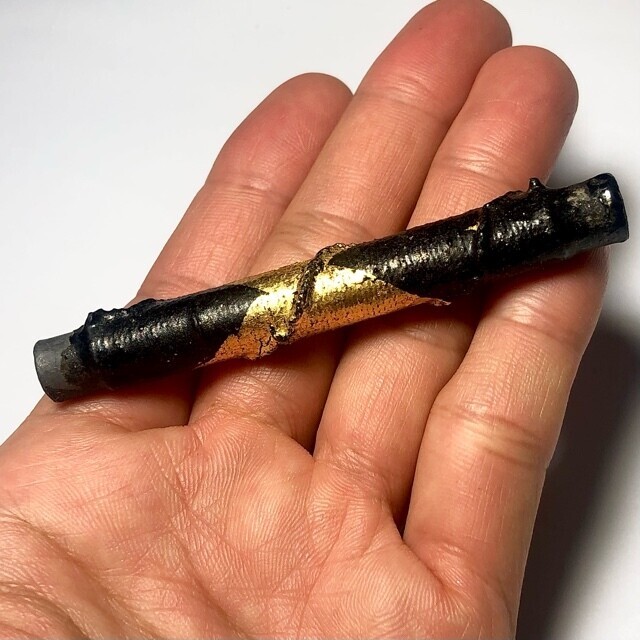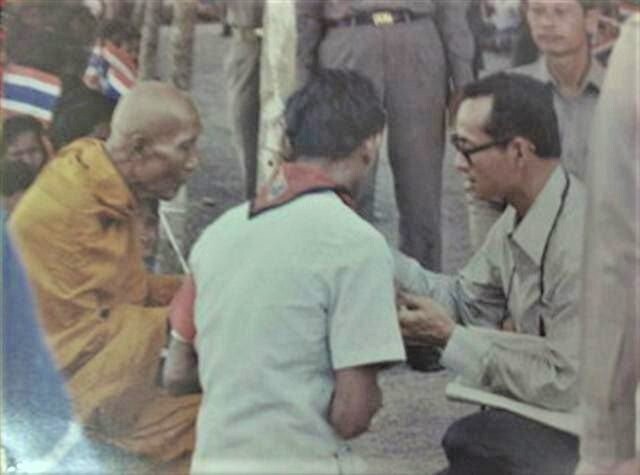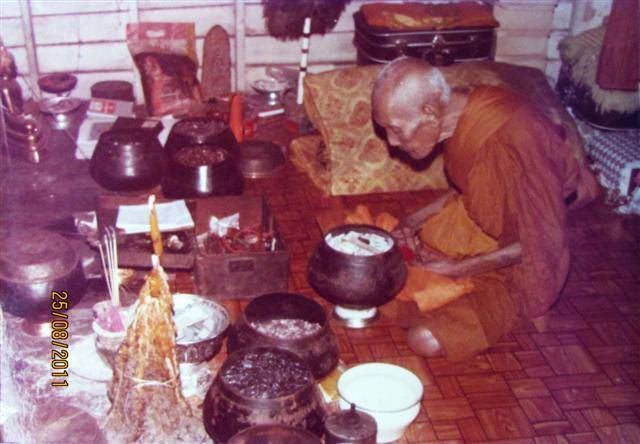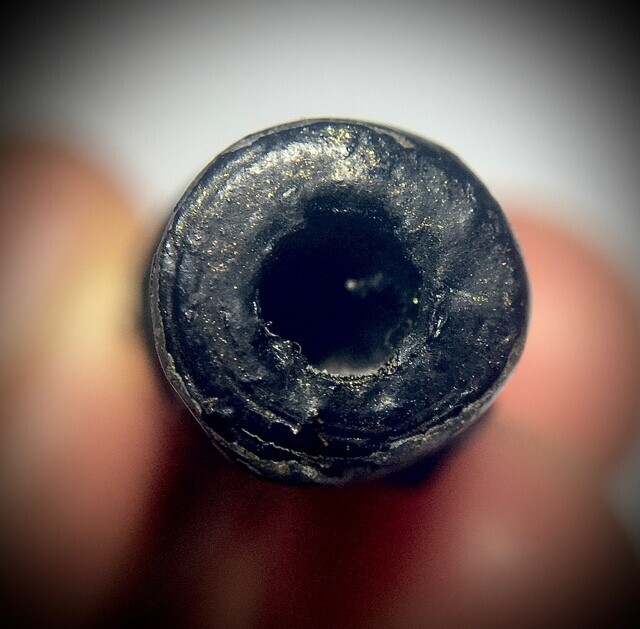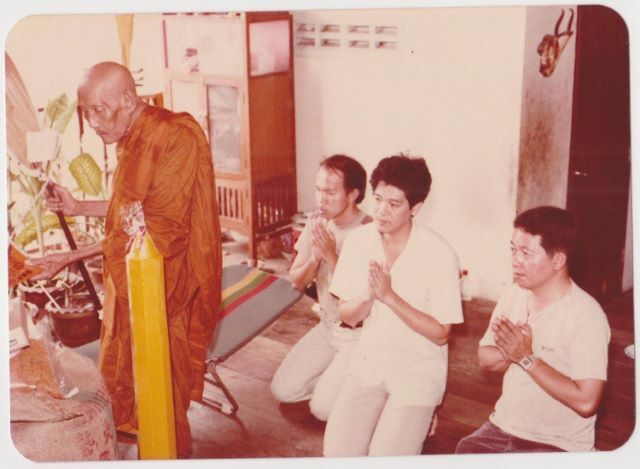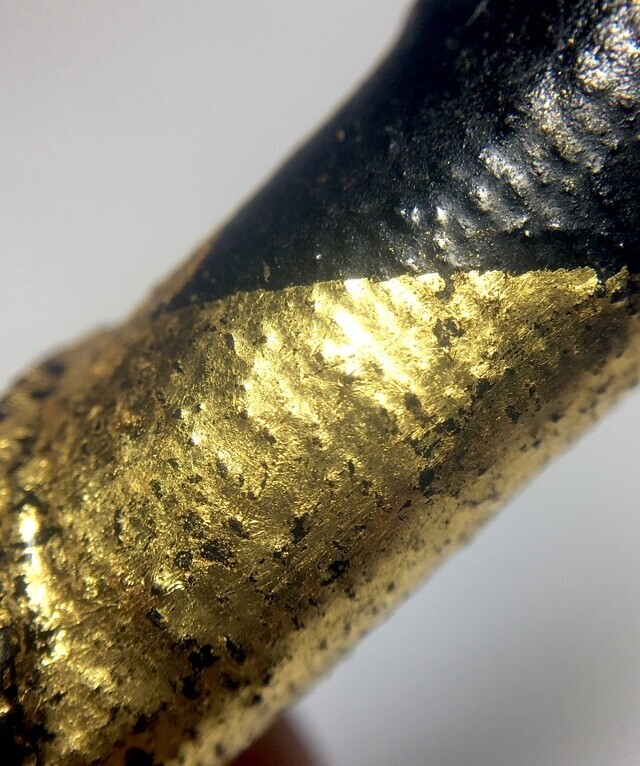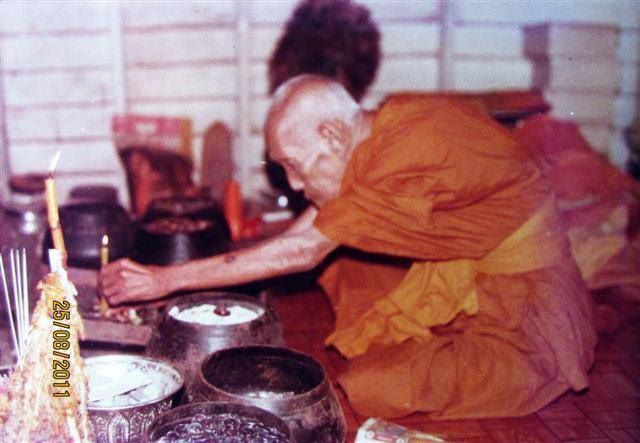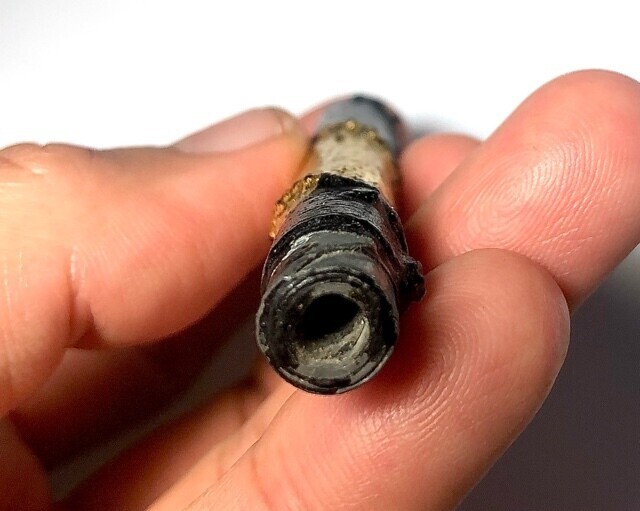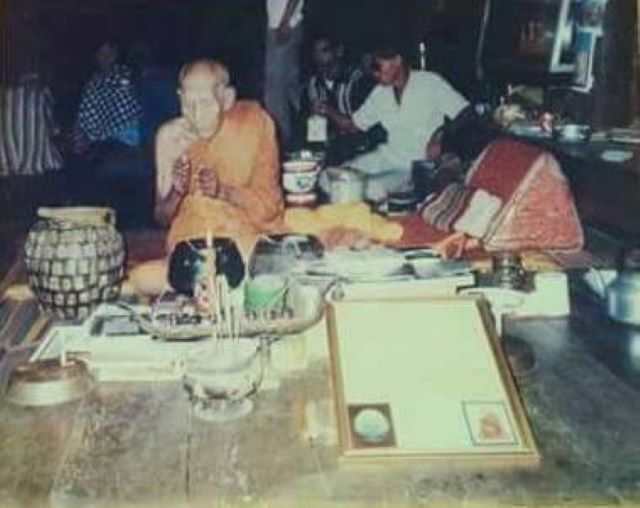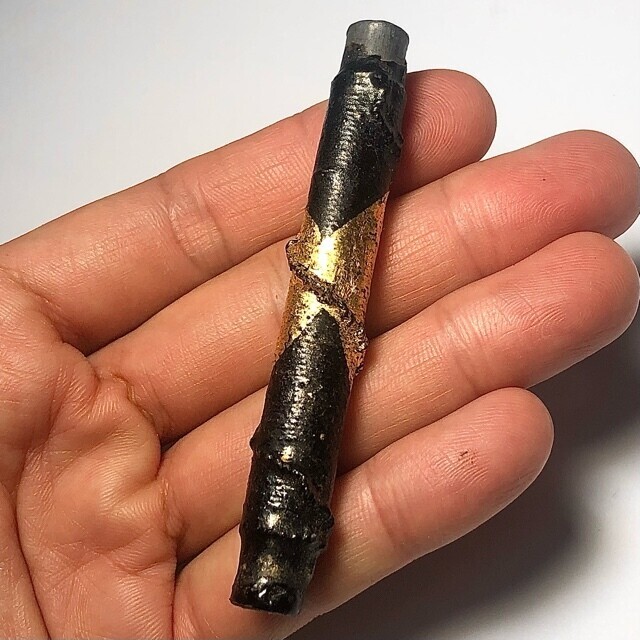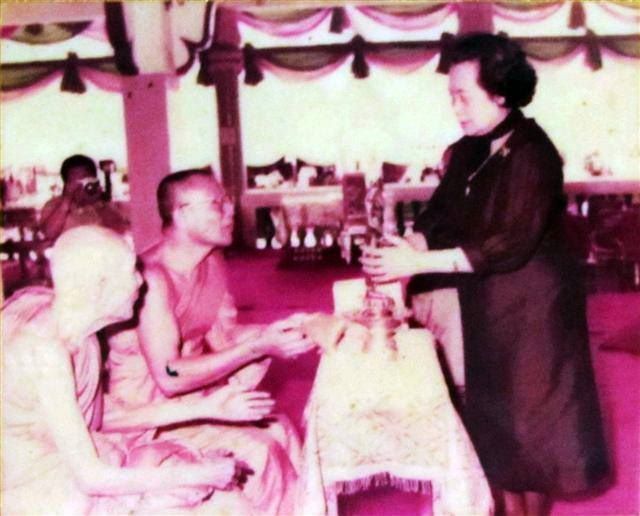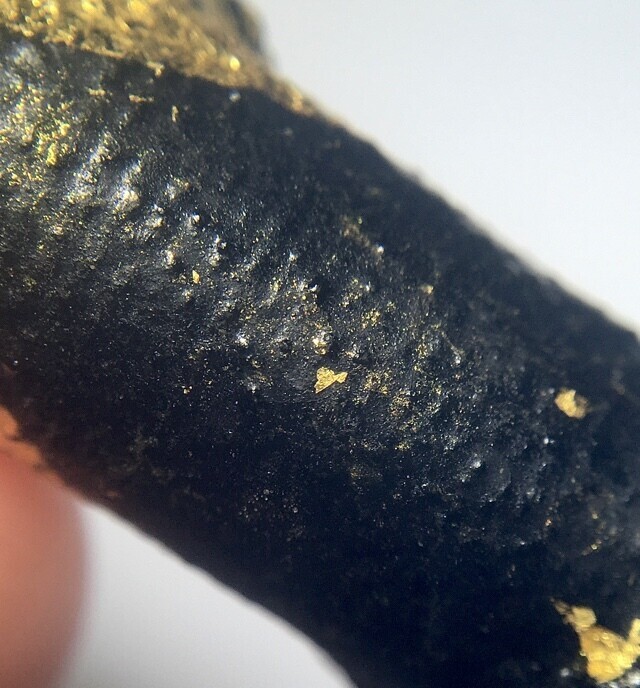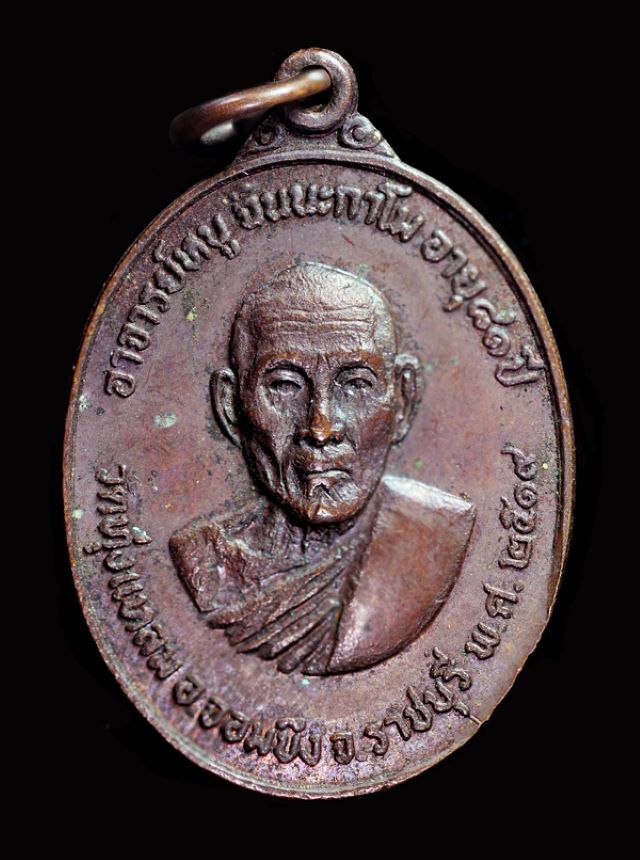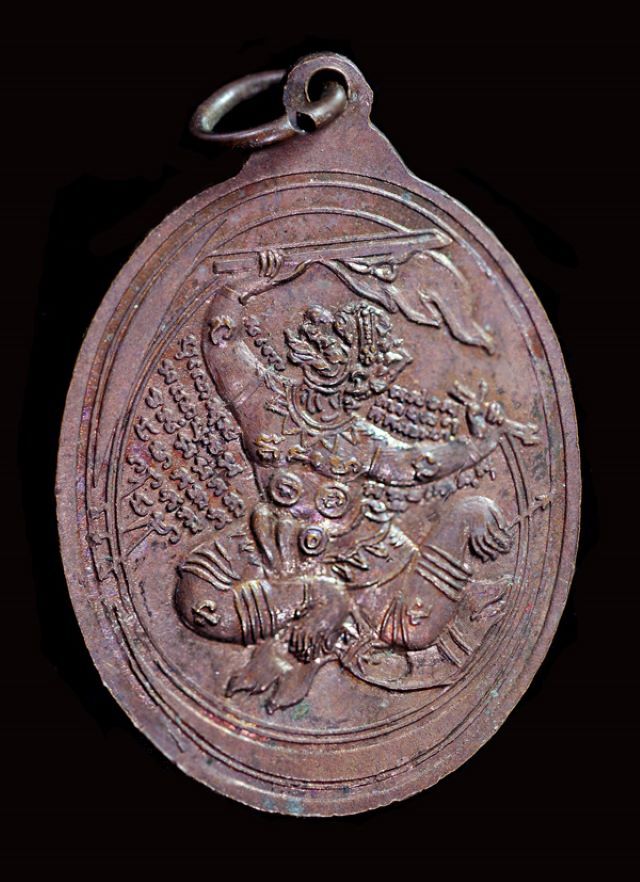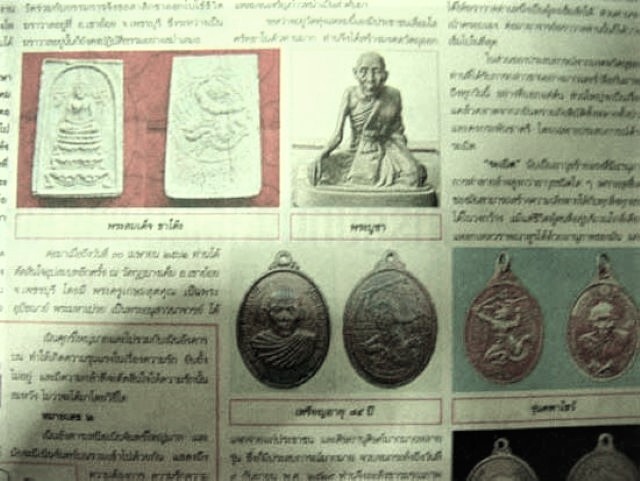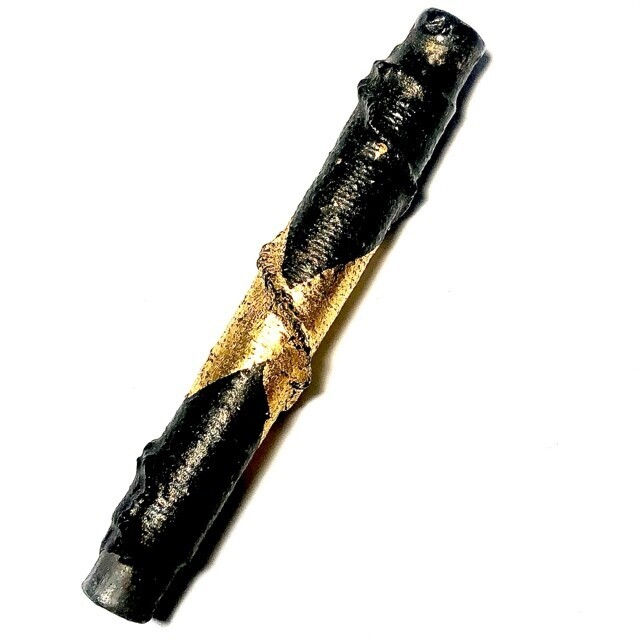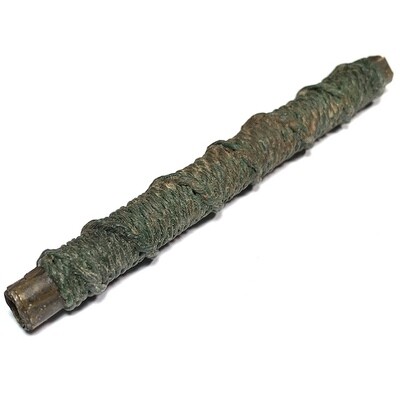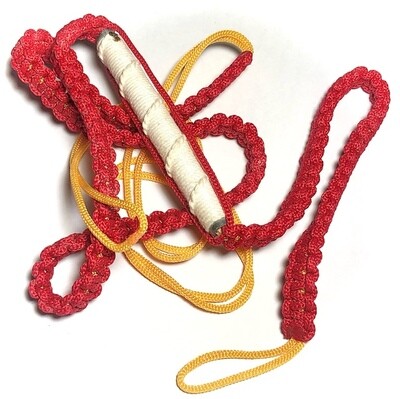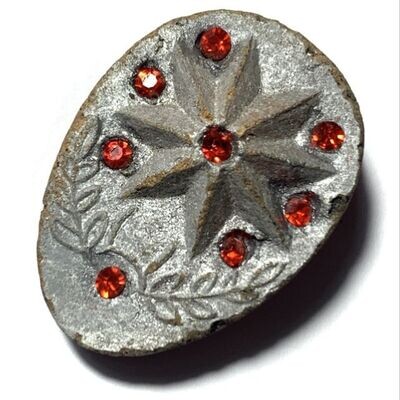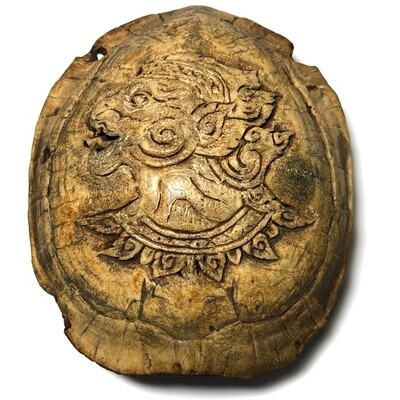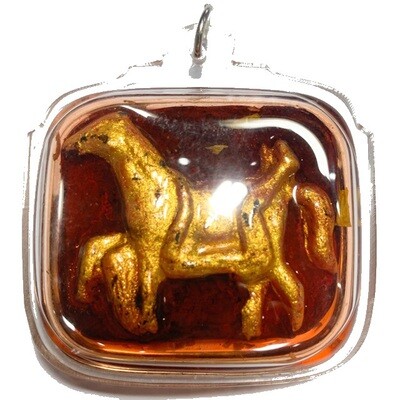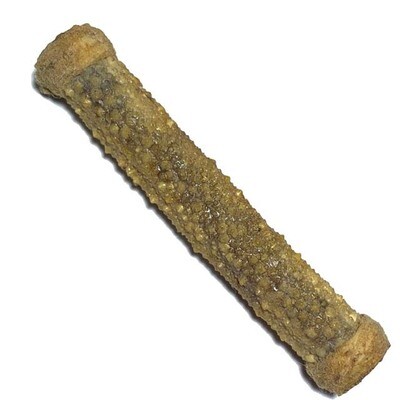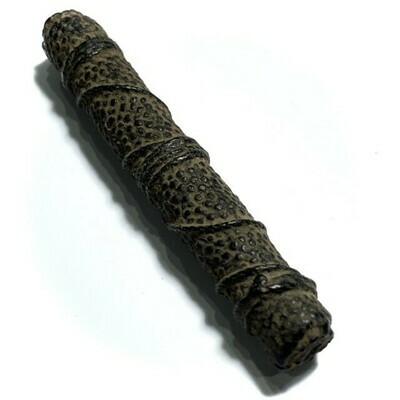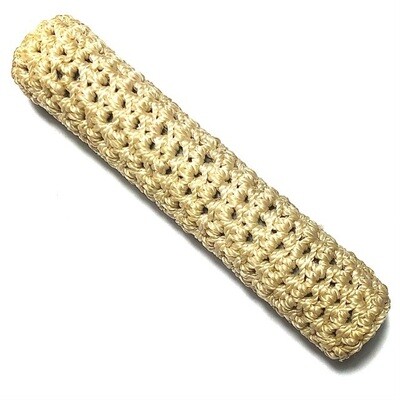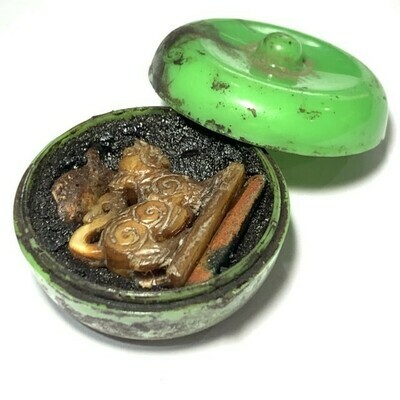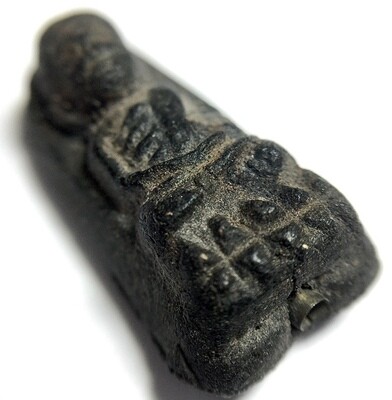A pristinely kept and extremely rare Rian Mangorn Koo Nuea Nava Loha Pim Pised Dtok Sorng Code Ma Wat Pha Nong Lom Run Sao Ha Maha Sethee 5th Lunar Saturday Blessing Ceremony Edition Guru Monk Coin, released in 2543 BE, to raise funds for the Kuti Songk Monks Huts and improve the facilities at the temple of Wat Pha Nong Lom.
This model of Rian Mangorn Koo twin dragons Monk Coin is a very rare Pim Pised (Niyom preferred) and differs from the majority of Rian Mangorn Koo Wat Pha Nong Lom Edition coins in Nava Loha, because of the double code MA stamp. Most coins of the Nava Loha series made for Wat Pha Nong Lom have only a single code Ma Stamp (on the Sangkati chest sash of the robe of Luang Phu), and only the Pim Pised special models received double code stamps. Only very few (unknown number) were distributed with double code stamp, making this not only a sacred, powerful master class amulet, but also a rare collectors piece.
The Rian Mangorn Koo of Luang Phu Hmun is, as are all of his amulets, known for the power of Jaroen Lap Wealth Increasement, and Lucky Fortunes, as well as for their Miraculous Protective Powers. Those born in the year of the dragon love to Bucha this amulet especially, for the obvious reason of the double dragon guardians.
For those with lower budgets, who seek power above collectability and rarity, we recommend to seek the Rian Mangorn Nuea Tong Daeng or Nava Loha single Code Ma, of the same edition, which carries a lower price than this special Nava Loha Pim Pised Gammagarn double code collectors edition model.
Takrut Tone Thak Chueak Long Rak Pid Tong Luang Phu Noo Wat Tung Laem
Cord and lacquer wrapped Takrut Tone Yantra spell scroll with chueak akom enchanted cord wrap, lacquered exterior and gold leaf blessing, from the Great Master of the Yant Hanuman Chern Tong, Luang Phu Noo Chinagamo of Wat Tung Laem (2438 BE - 2529 BE). This Takrut measures 3 Inches Long. The Takrut of LP Noo are renowned primarily for their Maha Ud, Klaew Klaad and Kong Grapan protective magic, and Serm Yos status and promotion.
Luang Phu Noo was a great master of Ratchaburi Province, who was highly renowned for his Wicha Hanuman Chern Tong, which he would apply to his amulets, Pha Yant, and Sak Yant Magical Tattoos. Luang Phu Noo was an adept Master of the Wicha Hanuman Chern Tong, and in his time was highly in demand for his Yant Hanuman Chern Tong tattoos, and his amulets with Hanuman on rear face (Hanuman with Victory Flag).
Luang Phu Noo's amulets are only partially documented since his later official releases, such as his Rian Roop Khai Hlang Hanuman Chern Tong monk coin, and his Pra Somdej Hlang Hanuman amulets. But Luang Phu Noo also made mmany Krueang Rang Talismanic amulets and Pha Yant cloths, and hand inscribed Takrut Yant scrolls, most of which are to date not completely documented with exactitude.
Biograpy of Luang Phu Noo Luang Pu Noo Chinagamo, was born in the Year 2438 BE, with the layman's name of 'Noo Jaroen Raksa'. After the young Noo had finished year 4 of primary school, he was ordained as a Samanera Novice Monk at Wat Nong Po, in Potaram, Ratchaburi. After his ordination as a young novice monk, he studied the Pariyatti Dhamma, and attained the level of Batchelor of Arts, and thereafter, a Doctorate Degree in Dhamma Studies, whilst still at such a young age.
Luang Por Noo then developed a deep interest in Wcha Akom Buddha Magic and Occult Practices, & Spellcasting using white magic and Buddha magic. He received mentorship in magical Wicha from the Great Luang Por Larb, of Wat Saen Dtor in Kanjanaburi. After this he received Wicha from Luang Por Hlung of Wat Tung Samor for a further 3 years of intensive practice. Then in the year 2458 BE, Luang Por Noo came fully of age, and was ordained as a fully-fledged adult Bhikkhu at Wat Mai Jaroen Pon, in Kanjanaburi. His full ordination was attended by Luang Por Pliw of Wat Samnak Dtakror as his Upachaya ordaining officer. LP Noo spent one year practicing Vipassana Kammathana Mindfulness meditation with LP Pliw.
Thereafter, Luang Por Noo, already adept with experience since his younger years as a novice, went on to spend a year learning magical Wicha from the legendary Luang Por Hnoeng, of Wat Klong Madan in Supanburi. Luang Phu Noo then furthered his study and practice of magical arts with Luang Por Jantr of Wat Ban Yang, in Ban Poeng. His advancements here led him to expand even further his aptitude, by practicing with the Great Luang Por Chaem of Wat Ta Gong in Nakorn Pathom.
After Luang Phu Noo finished his study, he returned to Wat Samnak Dtakror, until one day the Sangha Comittee beseeched Luang Phu Noo to become the abbot of Wat Gradtay Dten in Kanjanaburi. But Luang Phu Noo did not stay very long at the temple, and became restless with the banal worldly chores of administrating a temple, and he disrobed, and became a lay practitioner in Khao Yoi in Petchaburi. Despite disrobing, Ajarn Noo continued to spend his time in temples practicing, until he decided to return to the Sangha once more as a fully ordained Bhikkhu.
The ordination ceremony was held on the 30th of April 2502 BE, at Wat Gut Bang Kem in Khao Yoi, Ratchaburi. His Upachaya was Luang Por Kasem Suttakun, with his Anusawanajarn witness being Luang Por Pra Maha Bray. He was given a new Chaya monks name of 'Chinagamo'. After ordination, he resided at the temple of Wat Thai Tammaram, in Surat Thani in south Thailand. He remained at this temple for a period of about three years, after which he returned to Wat Bang Nam Kem for one year of further practice.
After this, Luang Phu Noo traveled to stay and practice at Wat Samnak Dtakror, where he stayed until the year 2510 BE. It was in this year of 2510, that the folk of Tung Laem municipality, many of whom were working and living in the area near Wat Samnak Takror, who had met and become faithful devotees of LP Noo, came to ask him to come and stay at Wat Tung Laem, for there were no monks staying there at alland the temple was in danger of becoming abandoned. So Luang Phu Noo accepted, and as soon as he arrive dto stay there, began projects to build and restore the temple, and improve it. At first, Wat Tung Laem consisted of one Kuti monk hut with grass roof and a shrine.
Luang Phu Noo began by building a new Kuti from wood, with a tin roof to begin with. He then stayed there practicing and receiving devotees, and raising funds to build with, intil in the year 2518 BE, Luang Phu Noo had built various necessary installations for the temple, and began the foundations for an Uposatha Shrineroom Building, to make it a fuly fledge temple with prayer room for the monks to chant, and for ordination of monks.
The raising of the 'Chor Fa' roof strust for the finished work of the Uposatha Building was completed in the year 2523 BE. Once the Uposatha was cnstructed, Luang Phu Noo then developed the remaining buildings to complete the temple including a Sala Brian study hall, Roeng Krua Refectory, and all the different types of buildings and annexes needed for proper practices within a Buddhist temple.
Luang Phu Noo then served the devotees over the years, as the temple grew in size and number of monks who came to stay, until he passed away at age 92, on the 9th of September 2529 BE. He was succeeded by Pra Atigarn Nin Thawaro as the abbot to follow him.
Luang Phu Noo's most famous amulet. is of course the Rian Roop Muean Hlang Hanuman Chern Tong monk coin with hanuman Yant on rear face.
High end collectors favor especially the first edition, which is hardly to be hoped to find in the present day, and with so many devotees revering Luang Phu Noo, it is so that all the subsequent editions of his Rian Luang Phu Noo Hlang Hanuman Chern Tong are equally revered by true devotees.
In fact, some devotees and collectors make it a point to try to own every single edition of the amulet, which is a common thing to see with devotees of any monk to be honest. Collectors like their collections to be complete, for a complete collection is of course also a rarity in itself, as well as Thai Buddhists consider the attempt to gather all releases of an amulet, as a way of building merit with that particular master, and to amplify blessings received, and lucky fortunes.
